Using unconventional statistical mechanics to understand fluid dynamics, UC San Diego Professor of Physics Nigel Goldenfeld helped solve a 150 year old physics problem of how turbulent fluids move through a pipe.
Tag: Fluid Dynamics
You Didn’t See It Coming: the Spontaneous Nature of Turbulence
UC San Diego Professor of Physics Nigel Goldenfeld has shown in theoretical models of turbulence that even molecular motions can create large-scale patterns of randomness over a defined period of time.
The race of water droplets
A team of researchers has delved into the mechanisms governing the speed at which a water droplet slides along one or several fibers.
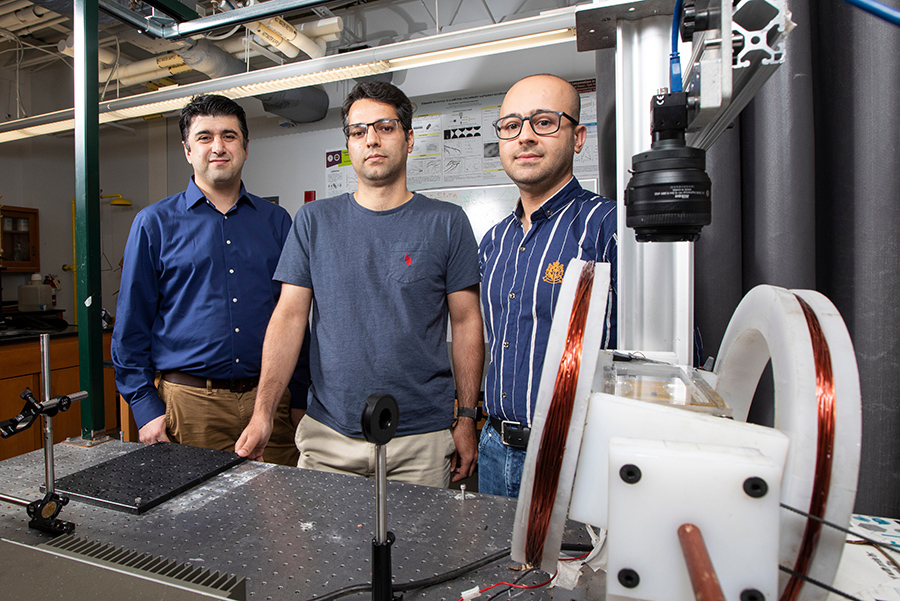
Researchers use 3D models to investigate bacteria movement
In a new study published by Physical Review Letters, FAMU-FSU College of Engineering researchers created a 3D model of Helicobacter pylori to better understand its movement, hoping to crack the code governing the organism’s motility and develop alternative treatments for infections, such as strengthening the gastric mucus barrier that stands against the bacteria.
Preserving Pine Forests by Understanding Beetle Flight
In Physics of Fluids, researchers from the University of Alberta study the flight performance of the mountain pine beetle from a fluid mechanics and an entomological perspective. Understanding these aspects of the insect’s flight could improve estimates of its spread through the environment and preserve pine forests. To examine insect flight, the team employed a type of model previously used for idealized airfoils. They showed that it can be successfully applied to multiple individual animals across biological sex, insect age, and body size. In doing so, the model can predict how these factors impact flight characteristics.
What Physicists Can Learn from Shark Intestines
ROCKVILLE, MD – In 1920, inventor Nikola Tesla patented a type of pipe that he called a “valvular conduit,” which was built to draw fluid in one direction without any moving parts or added energy, and has applications ranging from soft robotics to medical implants. In 2021, scientists discovered that sharks’ spiral-shaped intestines work much the same way, favoring fluid flow in one direction—from head to pelvis.
Optimal Layout for a Hospital Isolation Room to Contain COVID-19 Includes Ceiling Vent
Researchers recently modeled the transmission of COVID-19 within an isolation room at the Royal Brompton Hospital in London, U.K. Their goal was to explore the optimal room layout to reduce the risk of infection for health care staff. To accomplish this, they used an adaptive mesh finite-element computational fluid dynamics model to simulate 3D spatial distribution of the virus within the room — based on data collected from the room during a COVID-19 patient’s stay. They share their findings and guidance in Physics of Fluids.
A new way to identify stresses in complex fluids
Fluid dynamics researchers use many techniques to study turbulent flows like ocean currents, or the swirling atmosphere of other planets.
Watching Water Droplets Merge on the International Space Station
In Physics of Fluids, researchers design and analyze droplet experiments that were done on the International Space Station. The researchers sent four different surfaces with various roughness properties to the station, where they were mounted to a lab table. Cameras recorded the droplets as they spread and merged. The experimental results confirmed and expanded the parameter space of the Davis-Hocking model, a simple way to simulate droplets.
Flying Snakes Help Scientists Design New Robots
In Physics of Fluids, researchers explore the lift production mechanism of flying snakes, which undulate side-to-side as they move from the tops of trees to the ground to escape predators or to move around quickly and efficiently. The investigators developed a computational model derived from data obtained through high-speed video of the snakes and considered several features, such as the angle of attack that the snake forms with the oncoming airflow and the frequency of its undulations, to determine which were important in producing glide.
Physicists Uncover New Dynamical Framework for Turbulence
Physicists at Georgia Tech have proven — numerically and experimentally — that turbulence in fluid flows can be understood and quantified with the help of a small set of special solutions that can be precomputed for a particular geometry, once and for all.
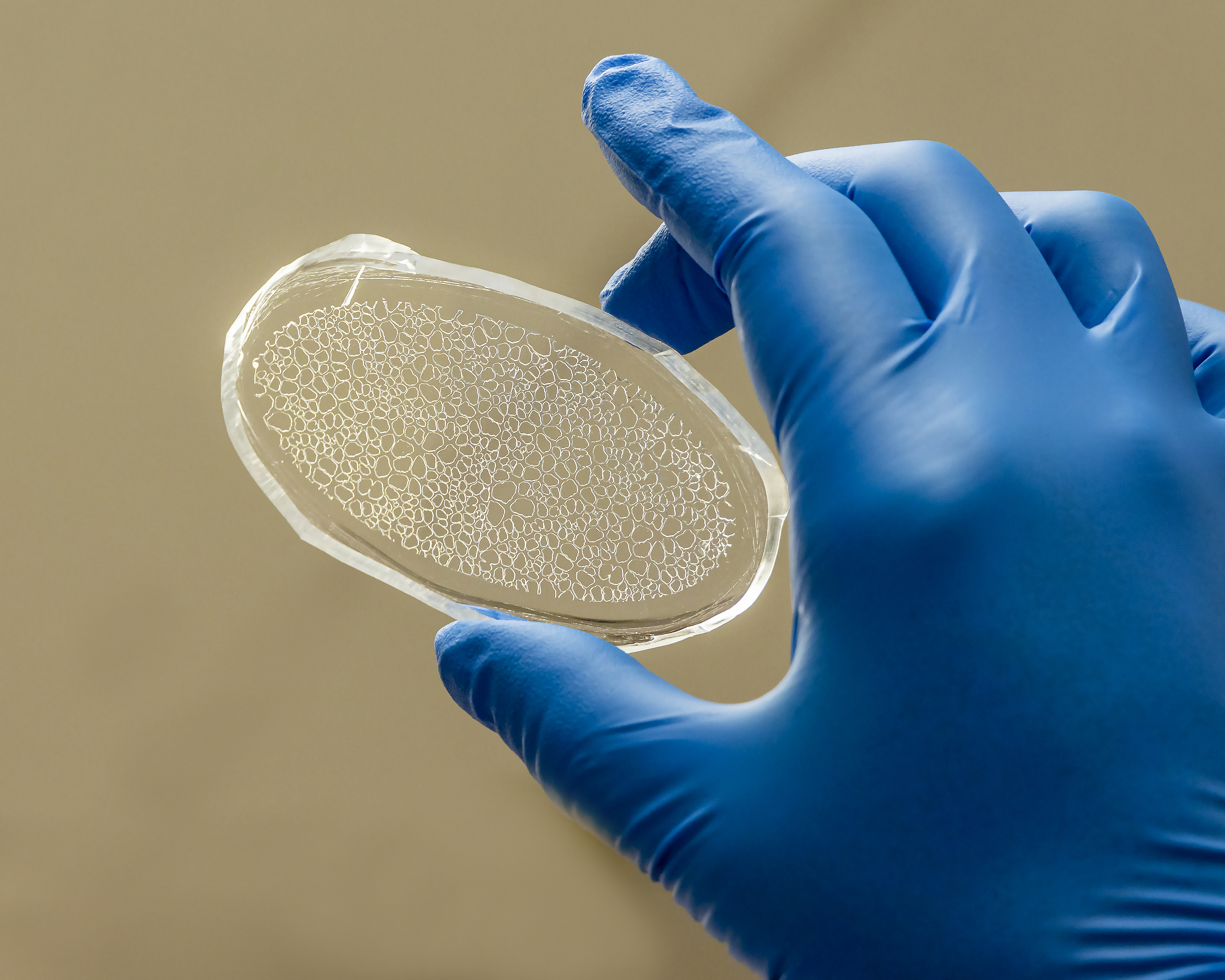
Unearthing the secrets of plant health, carbon storage with rhizosphere-on-a-chip
Scientists at the Department of Energy’s Oak Ridge National Laboratory have created a miniaturized environment to study the ecosystem around poplar tree roots for insights into plant health and soil carbon sequestration.
Rensselaer Professor Amir Hirsa To Track Physical and Virtual Virus Across Liquid Lining of the Lungs
A new project from Rensselaer Polytechnic Institute to develop a predictive model for how tiny virus particles behave in the lungs holds the potential to significantly impact COVID research. The fluid dynamics proposal was recently awarded a three-year National Science Foundation grant for $298,000.
Sizzling Sound of Deep-Frying Reveals Complex Physics
In Physics of Fluids, researchers carefully studied bubbles that form when water droplets come into contact with heated cooking oil and found that the type and number of bubbles formed depends on the amount of water absorbed by the chopsticks as well as the chopstick material. The water droplet explodes when it hit the hot oil, in three types of bubble events: an explosion cavity, an elongated cavity, and an oscillating cavity.

Uncorking Champagne Bottle Produces Supersonic Shock Waves
There is much more that comes out of the pop of an opening champagne bottle than meets the senses. In Physics of Fluids, computational fluid dynamics simulations revealed the formation, evolution, and dissipation of shock wave patterns as the carbon dioxide mixture shoots through the bottleneck in the first millisecond after cork popping. The findings could provide insight into the complex and transient behavior of supersonic flow in applications ranging from rocket launchers, ballistic missiles, and wind turbines to electronics manufacturing and underwater vehicles.
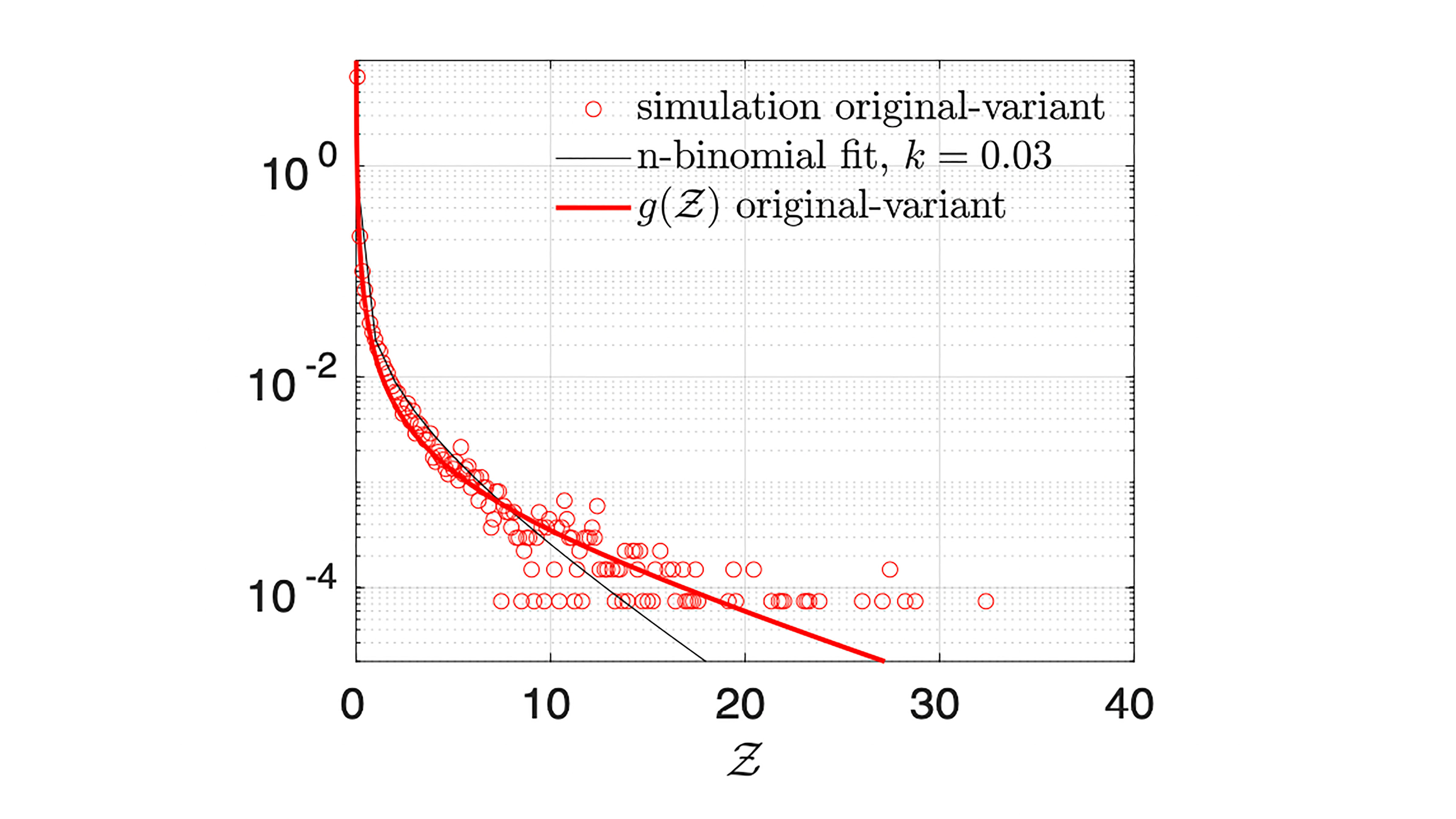
COVID-19 Superspreader Events Originate from Small Number of Carriers
In Physics of Fluids, researchers create a model to connect what biologists have learned about COVID-19 superspreading with how such events have occurred in the real world. They use occupancy data to test several features ranging from viral loads to the occupancy and ventilation of social contact settings. They found that 80% of infections occurring at superspreading events arose from only 4% of those who were carrying the virus into the event. The top feature driving the wide variability in superspreading events was the number of viral particles found in index cases.
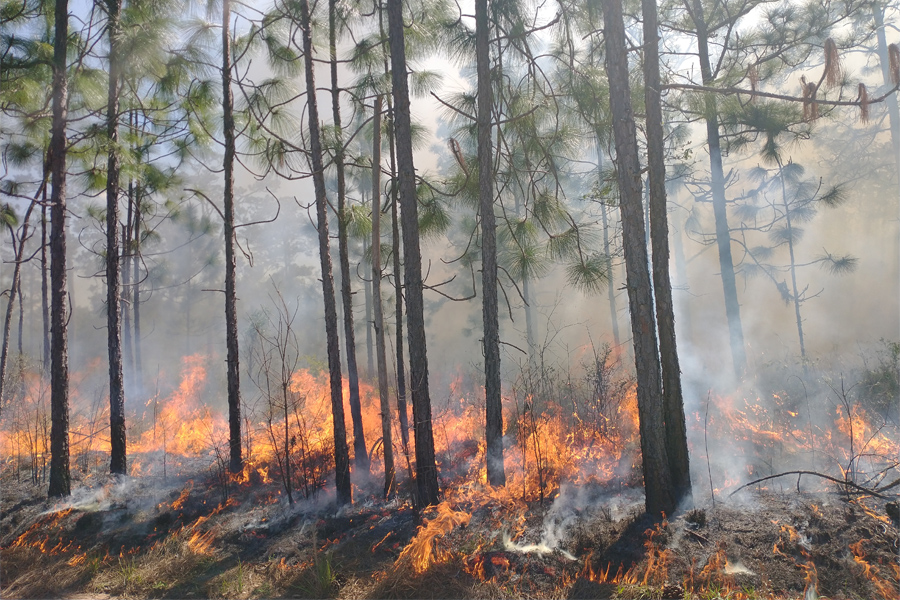
FSU expert investigating impact of prescribed burns
By: Bill Wellock | Published: May 23, 2022 | 4:38 pm | SHARE: Prescribed burns are an important tool for limiting the harmful effects of wildfires, but they require planning and proper conditions.The U.S. Forest Service recently announced a pause in the use of prescribed fire on National Forest System lands while the agency conducts a review of protocols and practices.
Exploring Dynamics of Blood Flow in Vascular, Atherosclerotic Diseases
In Physics of Fluids, researchers present clinicians with information about the risk factors for atherosclerotic plaque formation from a mechanical point of view. The scientists are exploring whether it is possible to screen and intervene early for people at risk for atherosclerotic disease from the perspective of hemodynamics, using color Doppler ultrasound, coronary computed tomography angiography, and other screenings. The researchers used a multipoint, noncontact laser flow measurement method called microparticle image velocimetry.
Face Shape Influences Mask Fit, Suggests Problems with Double Masking Against COVID-19
In Physics of Fluids, researchers use principal component analysis along with fluid dynamics simulation models to show the crucial importance of proper fit for all types of masks and how face shape influences the most ideal fit. They modeled a moderate cough jet from a mouth of an adult male wearing a cloth mask over the nose and mouth with elastic bands wrapped around the ears and calculated the maximum volume flow rates through the front of mask and peripheral gaps at different material porosity levels.
Krzysztof Gawędzki, Antti Kupiainen Share 2022 Dannie Heineman Prize for Mathematical Physics
AIP and APS announce Krzysztof Gawędzki and Antti Kupiainen as the recipients of the 2022 Dannie Heineman Prize for Mathematical Physics. The prize is awarded annually to recognize significant contributions to the field of mathematical physics. The citation on their award reads: “for fundamental contributions to quantum field theory, statistical mechanics, and fluid dynamics using geometric, probabilistic, and renormalization group ideas.” The prize will be presented at either the APS March Meeting in Chicago or the APS April Meeting in New York City.
Computational Evaluation of Drug Delivery Reveals Room for Inhalers Improvement
Increased air pollution in recent years has exacerbated health risks for people who suffer from pulmonary diseases and these dynamics underscore the importance of increasing the efficacy of drug delivery devices that administer active pharmaceutical ingredients to treat respiratory illnesses. In Physics of Fluids, researchers describe developing a computational evaluation of drug delivery through both pressurized metered-dose inhalers and dry powder inhalers to determine how the process can be improved.
New Approach Methodologies, Single Cell RNAseq, and More Featured in 2021 Toxicological Sciences
Toxicological Sciences delivers cutting-edge research in toxicology in the areas of clinical and translational toxicology, emerging technologies, and more in the August 2021 issue.
Artificial Stomach Reveals Fluid Dynamics of Food Digestion
Scientists have extensively studied how gastric juices in the stomach break down ingested food and other substances. However, less is known about how complex flow patterns and mechanical stresses in the stomach contribute to digestion. Researchers built a prototype of an artificial antrum to present a deeper understanding of how physical forces influence food digestion based on fluid dynamics. In Physics of Fluids, they reveal a classifying effect based on the breakup of liquid drops combined with transport phenomena.
FAU Teams Up with Technion – Israel Institute of Technology on NSF Grant
FAU has received a $309,527 grant from the National Science Foundation to spearhead the project that will involve experimental work carried out at Technion, and numerical simulations and machine learning tasks conducted at FAU.
Tree Pollen Carries SARS-CoV-2 Particles Farther, Facilitates Virus Spread
A study on the role of microscopic particles in virus transmission suggests pollen is nothing to sneeze at. In Physics of Fluids, researchers investigate how pollen facilitates the spread of an RNA virus like the COVID-19 virus. The study draws on cutting-edge computational approaches for analyzing fluid dynamics to mimic the pollen movement from a willow tree, a prototypical pollen emitter. Airborne pollen grains contribute to the spread of airborne viruses, especially in crowded environments.
Normal Breathing Sends Saliva Droplets 7 Feet; Masks Shorten This
The WHO and the CDC recommend keeping a certain distance between people to prevent the spread of COVID-19. These social distancing recommendations are estimated from a variety of studies, but further research about the precise mechanism of virus transport is still needed. In Physics of Fluids, researchers demonstrate normal breathing indoors without a mask can transport saliva droplets capable of carrying virus particles to a distance of 2.2 meters in a matter of 90 seconds.
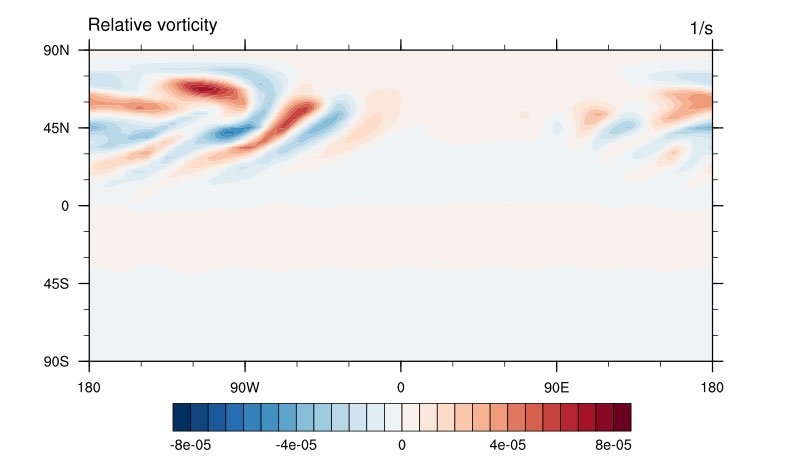
Scientists Check the Math for Improved Models of Liquids and Gases in Earth’s Atmosphere
Discretization is the process of converting continuous models and variables, such as wind speed, into discrete versions to make equations that are compatible with computer analysis. Energy consistent discretization ensures that the method does not have any inaccurate sources of energy that can lead to unstable and unrealistic simulations. In this research, scientists provided a discretization for equations used by global models of the Earth’s atmosphere.
Simulating sneezes and coughs to show how COVID-19 spreads
Two groups of researchers at Sandia National Laboratories have published papers on the droplets of liquid sprayed by coughs or sneezes and how far they can travel under different conditions. Both teams used Sandia’s decades of experience with advanced computer simulations studying how liquids and gases move for its nuclear stockpile stewardship mission.
Rutgers Engineers Developing Rapid Breathalyzer Test for COVID-19
New Brunswick, N.J. (April 30, 2021) – Rutgers University–New Brunswick engineering professors Edward P. DeMauro, German Drazer, Hao Lin and Mehdi Javanmard are available for interviews on their work to develop a new type of fast-acting COVID-19 sensor that detects the presence…
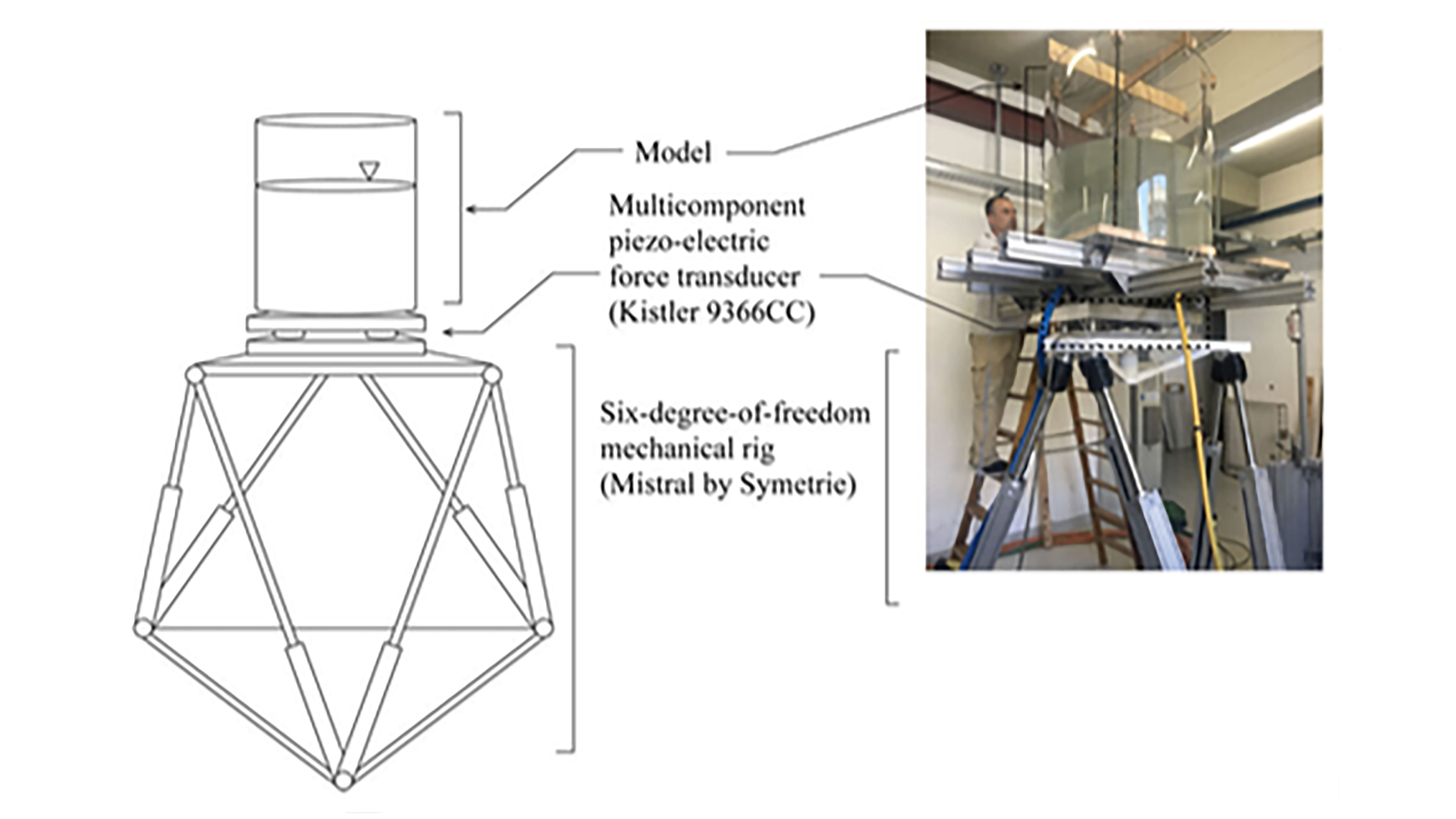
Controlling Sloshing Motions in Sea-Based Fish Farming Cages Improves Fish Welfare
Sea-based fish farming systems using net pens are hard on the environment and fish. A closed cage can improve fish welfare, but seawater must be continuously circulated through the cage. However, waves can cause the water to slosh inside the cage, creating violent motions and endangering the cage and fish. A study using a scale-model containment system is reported in Physics of Fluids and shows why violent sloshing motions arise and how to minimize them.
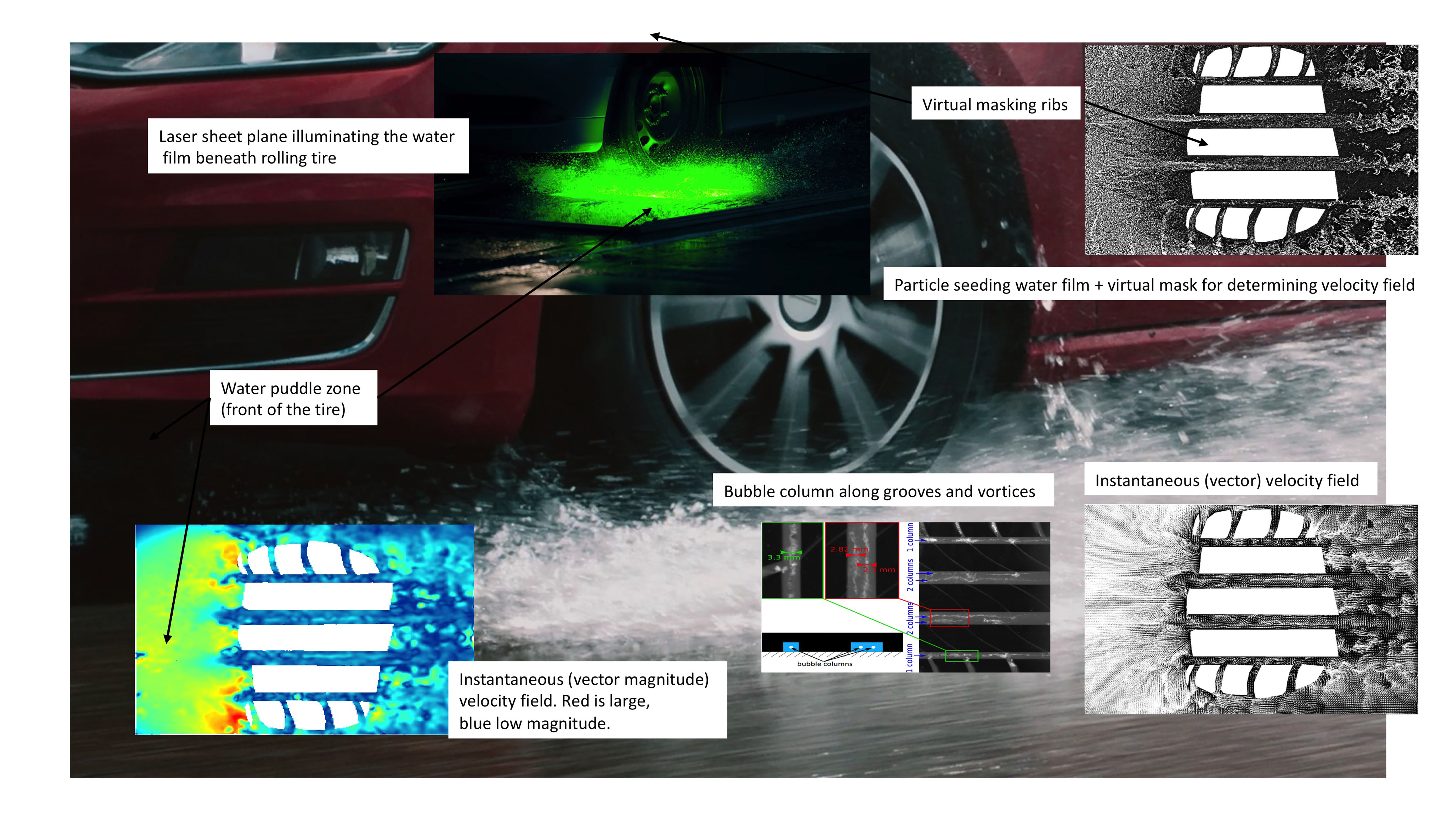
Complex Fluid Dynamics May Explain Hydroplaning
Research into hydroplaning currently uses a test track equipped with a transparent window embedded in the ground. The area above is flooded and a tire rolling over the window is observed with a high-speed camera. Investigators in France have developed a more sophisticated approach involving fluorescent seeding particles to visualize the flow and used a sheet of laser light to illuminate the area. They discuss their work in Physics of Fluids.
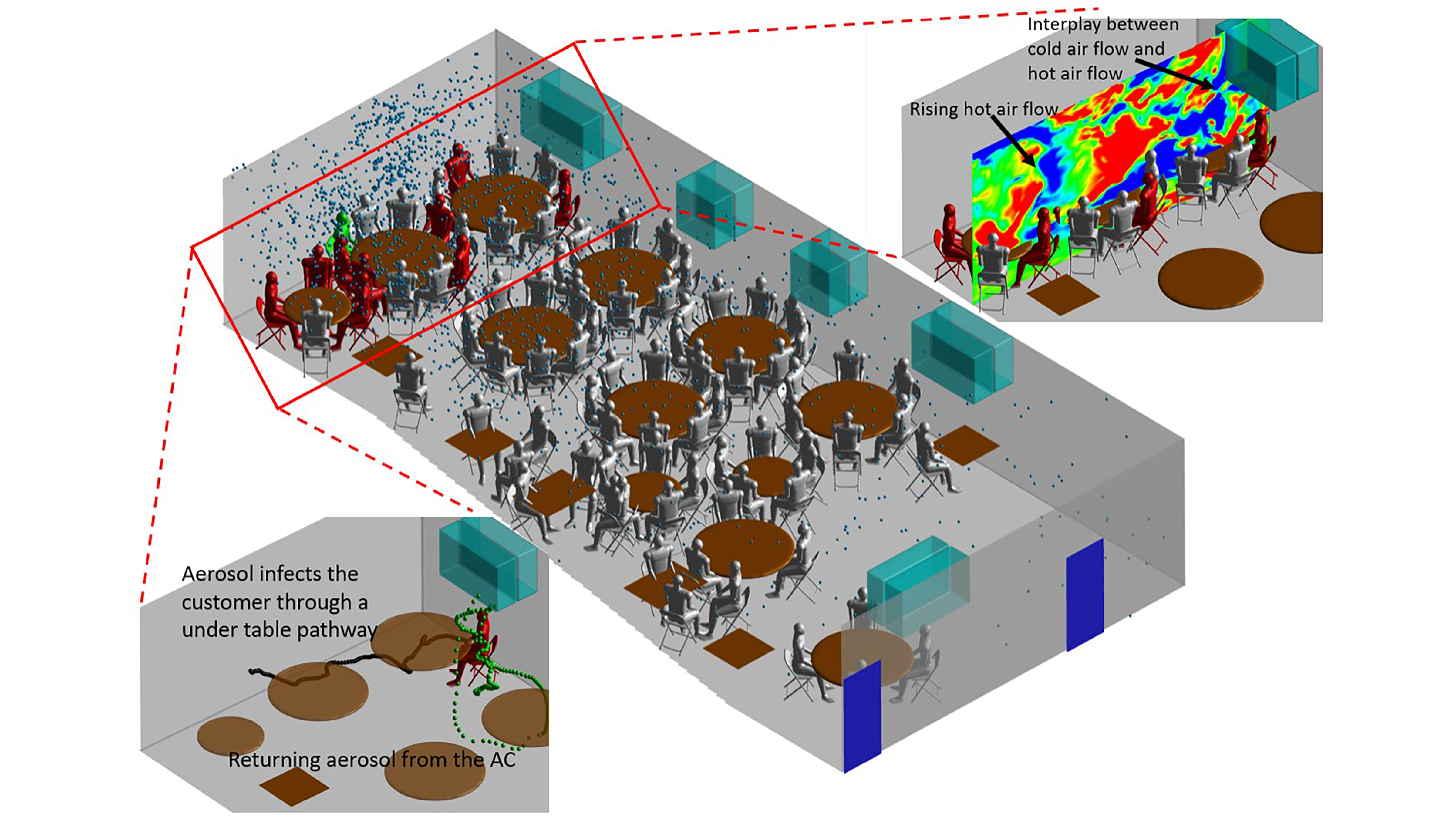
Advanced Simulations Reveal How Air Conditioning Spreads COVID-19 Aerosols
A restaurant outbreak in China was widely reported as strong evidence of airflow-induced transmission of COVID-19, but it lacked a detailed investigation about exactly how transmission occurred. In Physics of Fluids, researchers at the University of Minnesota report using advanced simulation methods to capture the complex flows that occur when the cold airflow from air conditioners interacts with the hot plume from a dining table and the transport of virus-loading particles within such flows.
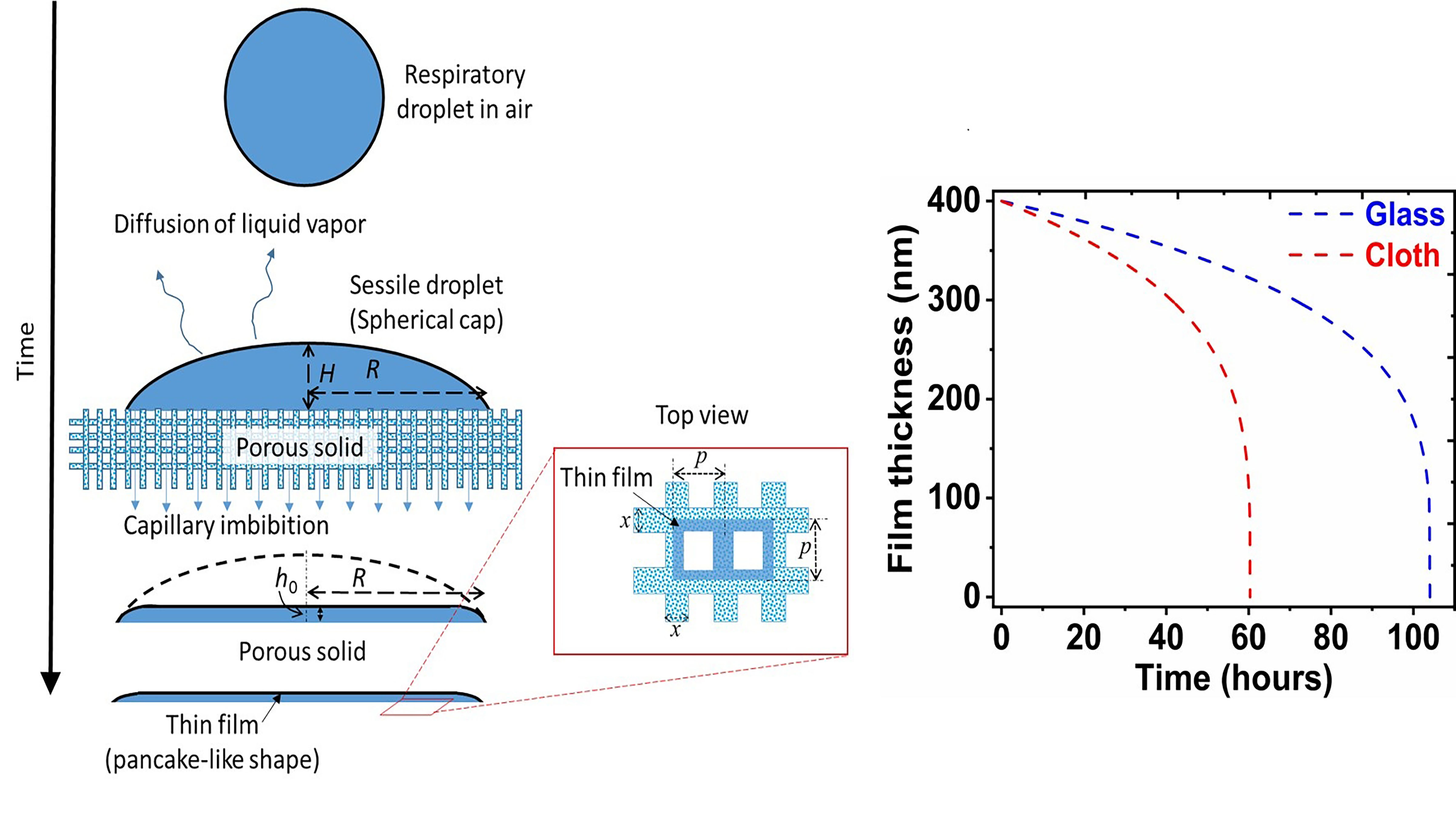
Porous Materials Unfavorable for Coronavirus Survival
As COVID-19 spreads via respiratory droplets, researchers have become increasingly interested in the drying of droplets on impermeable and porous surfaces; surfaces that accelerate evaporation can decelerate the spread of the virus. In Physics of Fluids, researchers show a droplet remains liquid for a much shorter time on a porous surface, making it less favorable to survival of the virus. On paper and cloth, the virus survived for only three hours and two days, respectively.
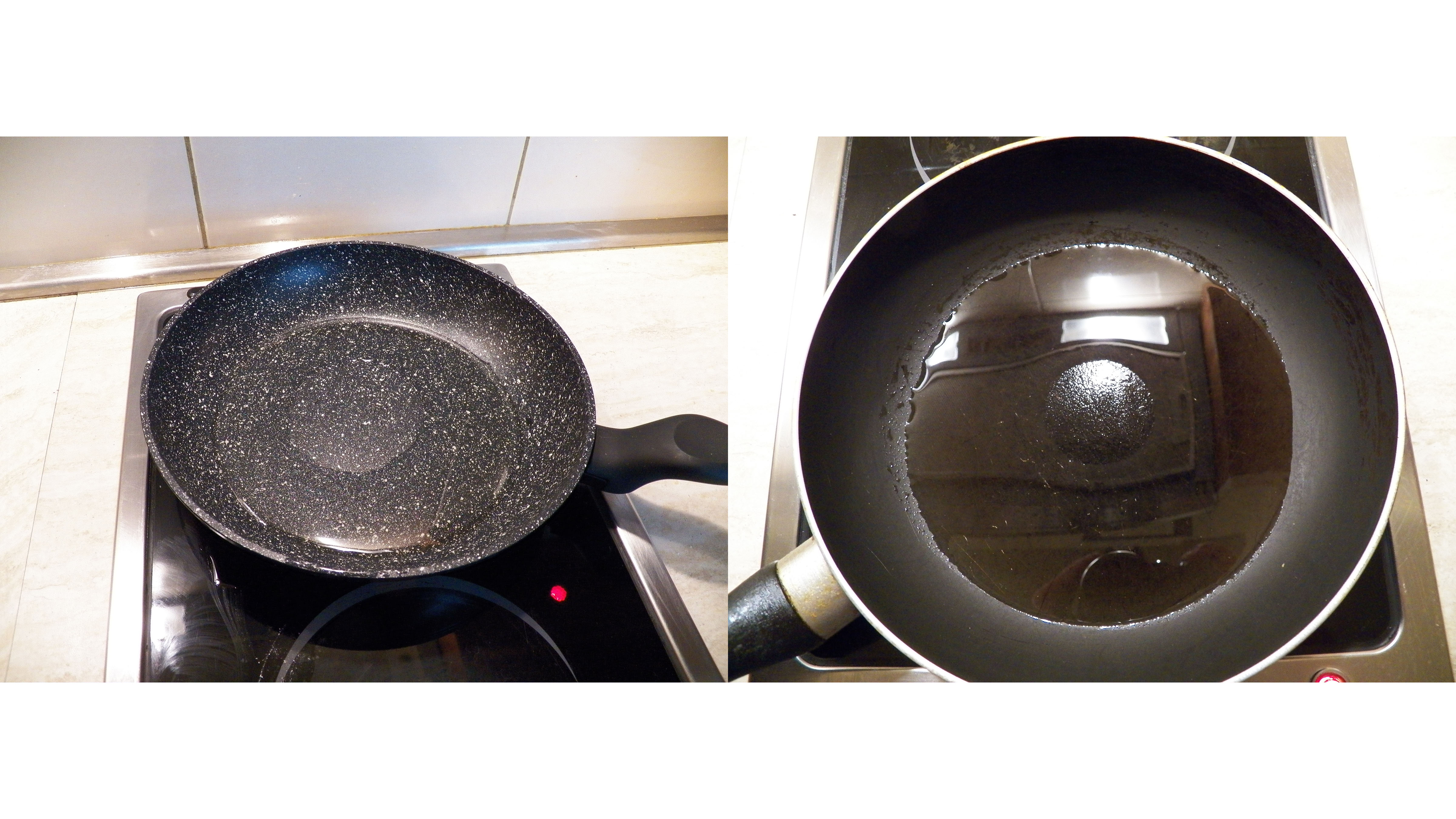
Why Food Sticks to Nonstick Frying Pans
Foods will sometimes get stuck to a heated surface, even if oil or a nonstick frying pan is used. Scientists have investigated the fluid properties of oil on a flat surface and their work, reported in Physics of Fluids, shows convection may be to blame. When the pan is heated from below, a temperature gradient is established in the oil film, as well as a surface tension gradient. This gradient sets up a type of convection known as thermocapillary convection.
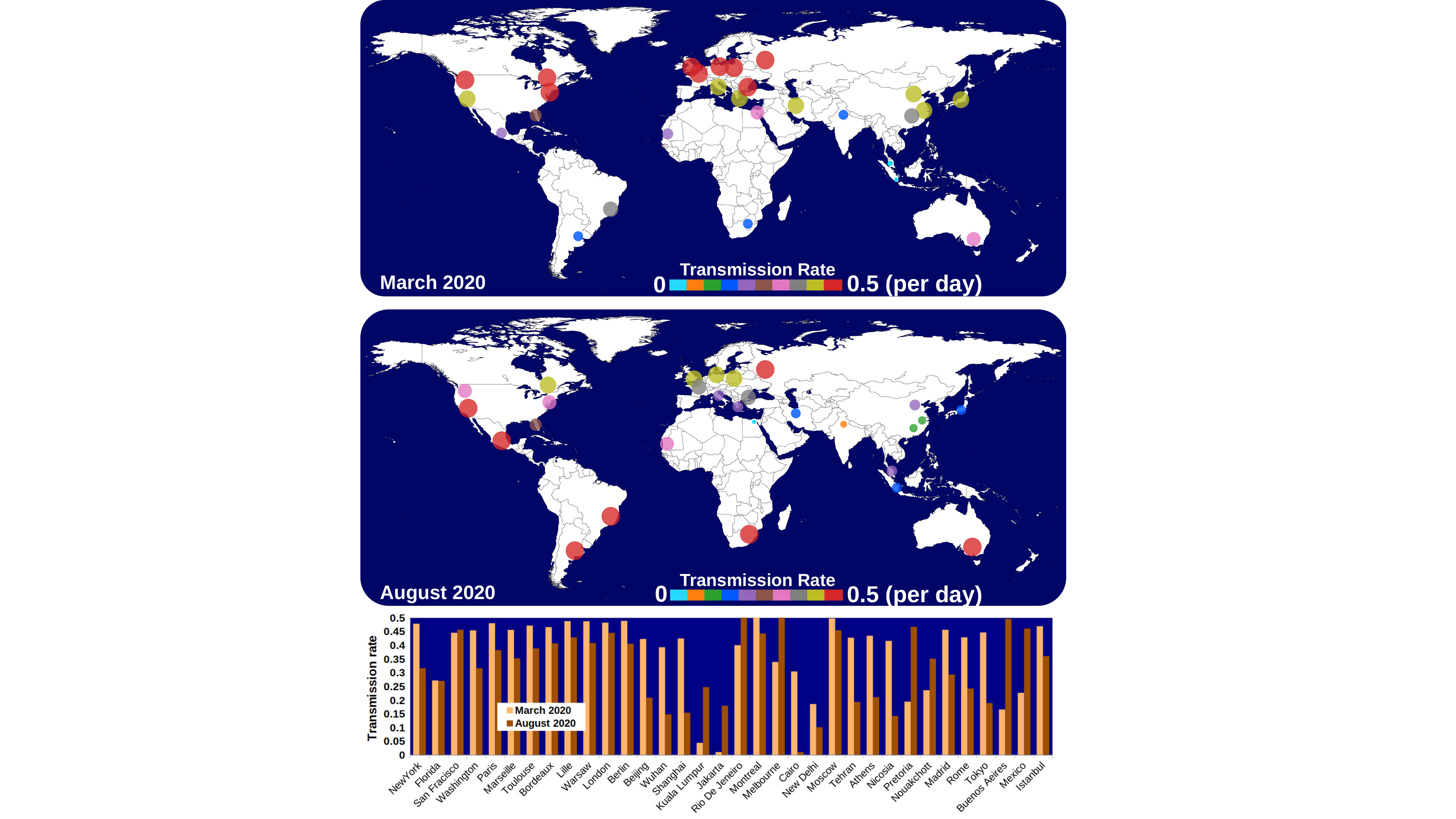
Temperature, Humidity, Wind Predict Second Wave of Pandemic
The “second wave” of the coronavirus pandemic has placed much blame on a lack of appropriate safety measures. However, due to the impacts of weather, research suggests two outbreaks per year are inevitable. Though face masks, travel restrictions, and social distancing guidelines help slow the number of new infections in the short term, the lack of climate effects incorporated into epidemiological models presents a glaring hole that can cause long-term effects. In Physics of Fluids, researchers discuss the impacts of these parameters.
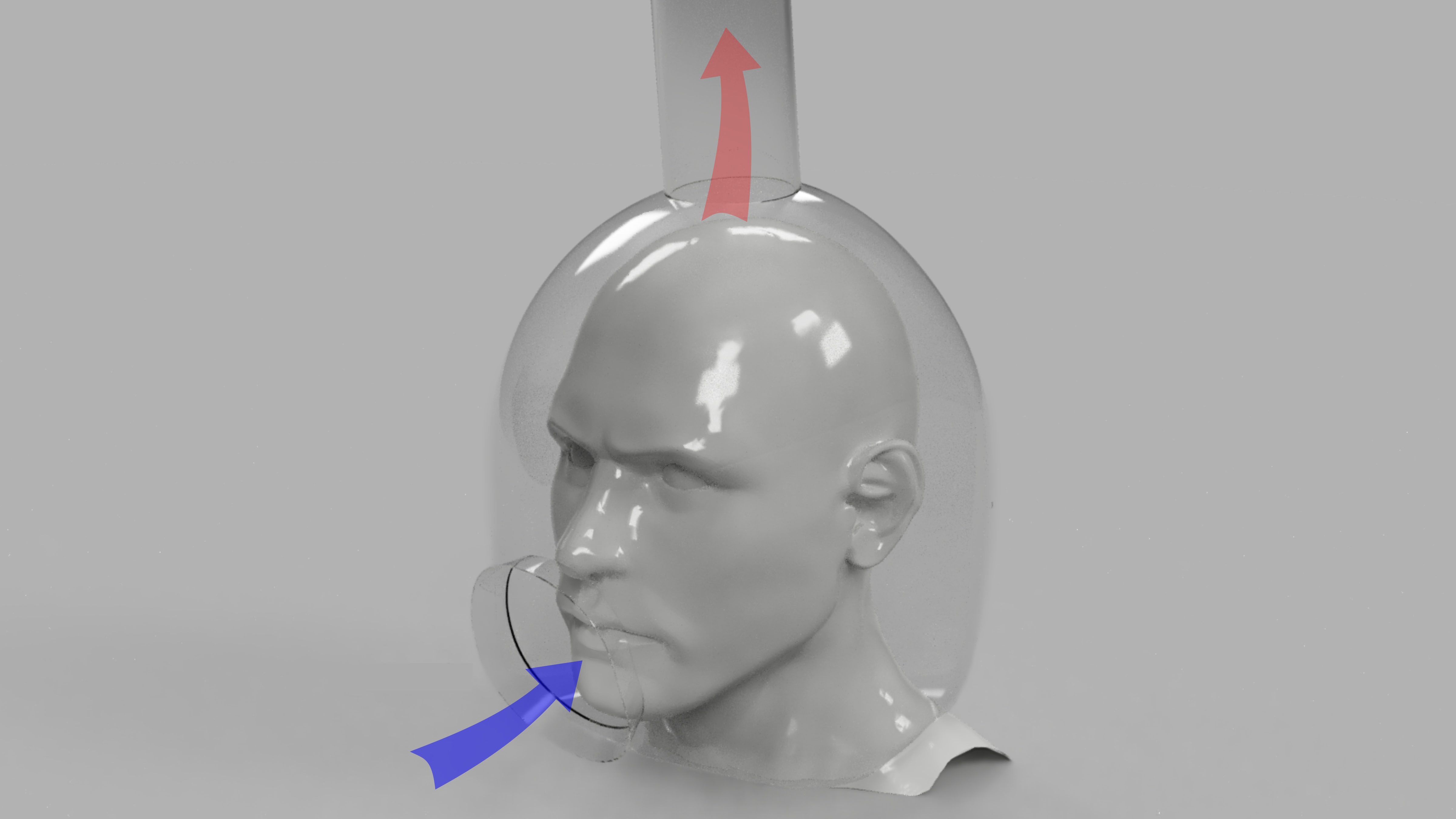
Disposable Helmet Retains Cough Droplets, Minimizes Transmission to Dentists, Otolaryngologists
Dentists and otolaryngologists are at particular risk of infection of COVID-19, since they need direct access to the mouth, nose, and throat of patients. The current solutions are expensive, not highly effective, and not very accessible. In Physics of Fluids, researchers discuss their design of an open-faced helmet for patient use that is connected to a medical-grade air filtration pump from the top that creates a reverse flow of air to prevent cough droplets from exiting the helmet.
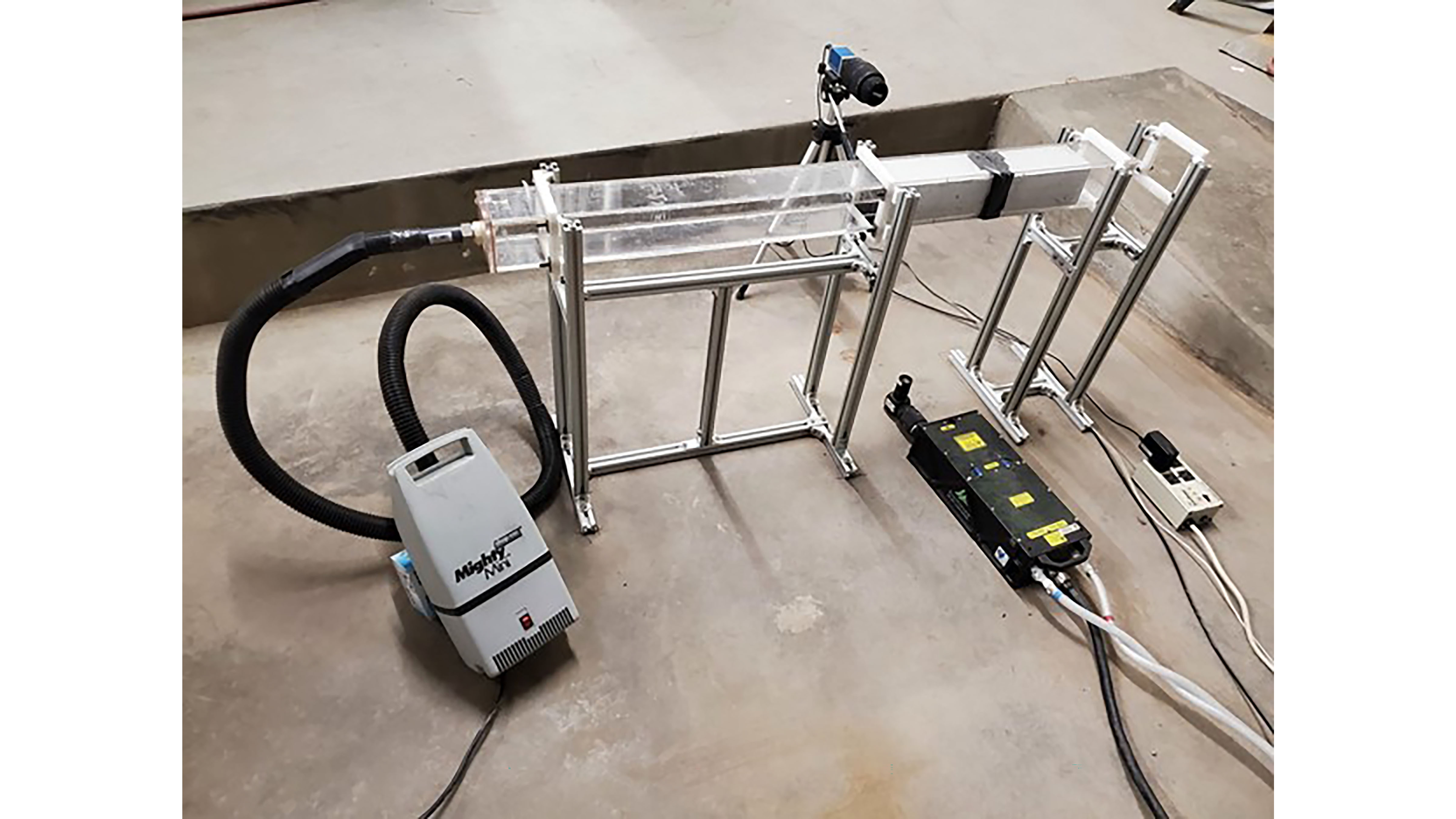
Masks Not Enough to Stop COVID-19’s Spread Without Distancing
Simply wearing a mask may not be enough to prevent the spread of COVID-19 without social distancing. In Physics of Fluids, researchers tested how different types of mask materials impacted the spread of droplets that carry the coronavirus when we cough or sneeze. Every material tested dramatically reduced the number of droplets that were spread. But at distances of less than 6 feet, enough droplets to potentially cause illness still made it through several of the materials.
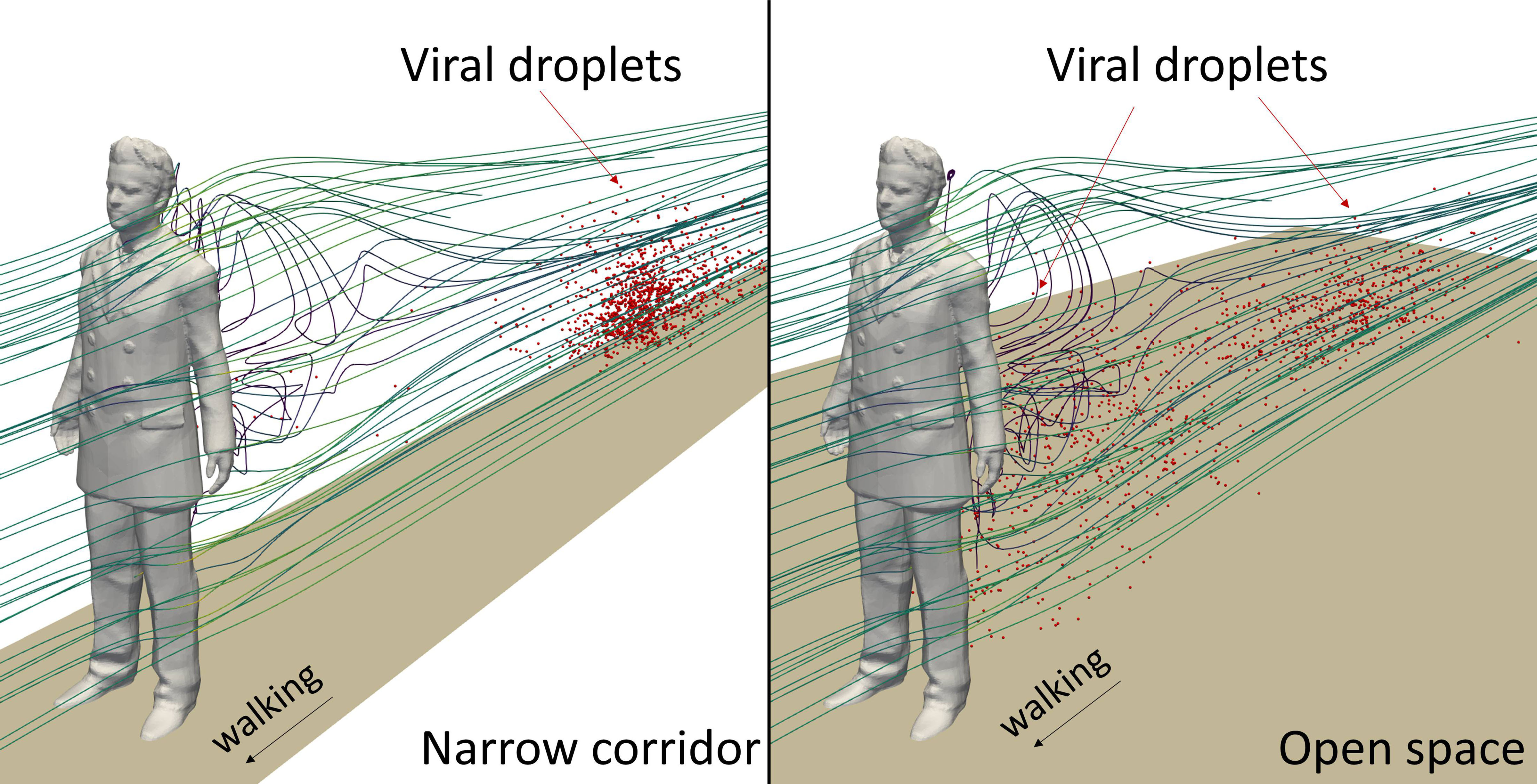
Fast Walking in Narrow Corridors Can Increase COVID-19 Transmission Risk
Simulations have been used to predict droplet dispersal patterns in situations where COVID-19 might be spread and results in Physics of Fluids show the importance of the space shape in modeling how droplets move. The simulations are used to determine flow patterns behind a walking individual in spaces of different shape. The results reveal a higher transmission risk for children in some instances, such as behind quickly moving people in a long narrow hallway.
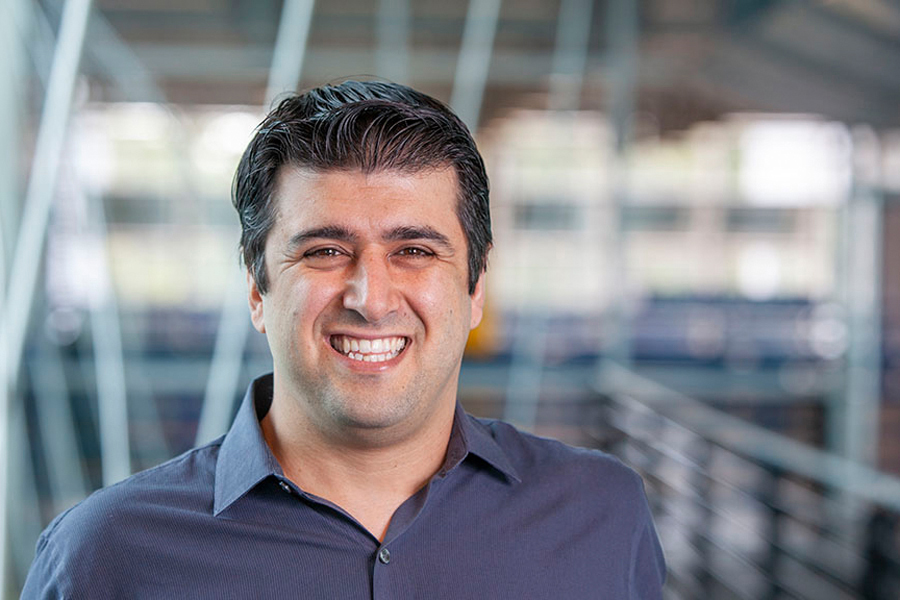
FSU researchers investigate how face shape affects COVID-19 mask performance
Face masks are helpful in preventing the spread of COVID-19, but researchers believe they can be made even more effective, something that has implications far beyond the current pandemic as masks could become a more commonly used public health intervention. Kourosh Shoele, an assistant professor in the Department of Mechanical Engineering at the FAMU-FSU College of Engineering, is part of a team that has received an $800,000 grant from the National Science Foundation to improve the efficacy of face masks as a defense against COVID-19 and other pathogens.
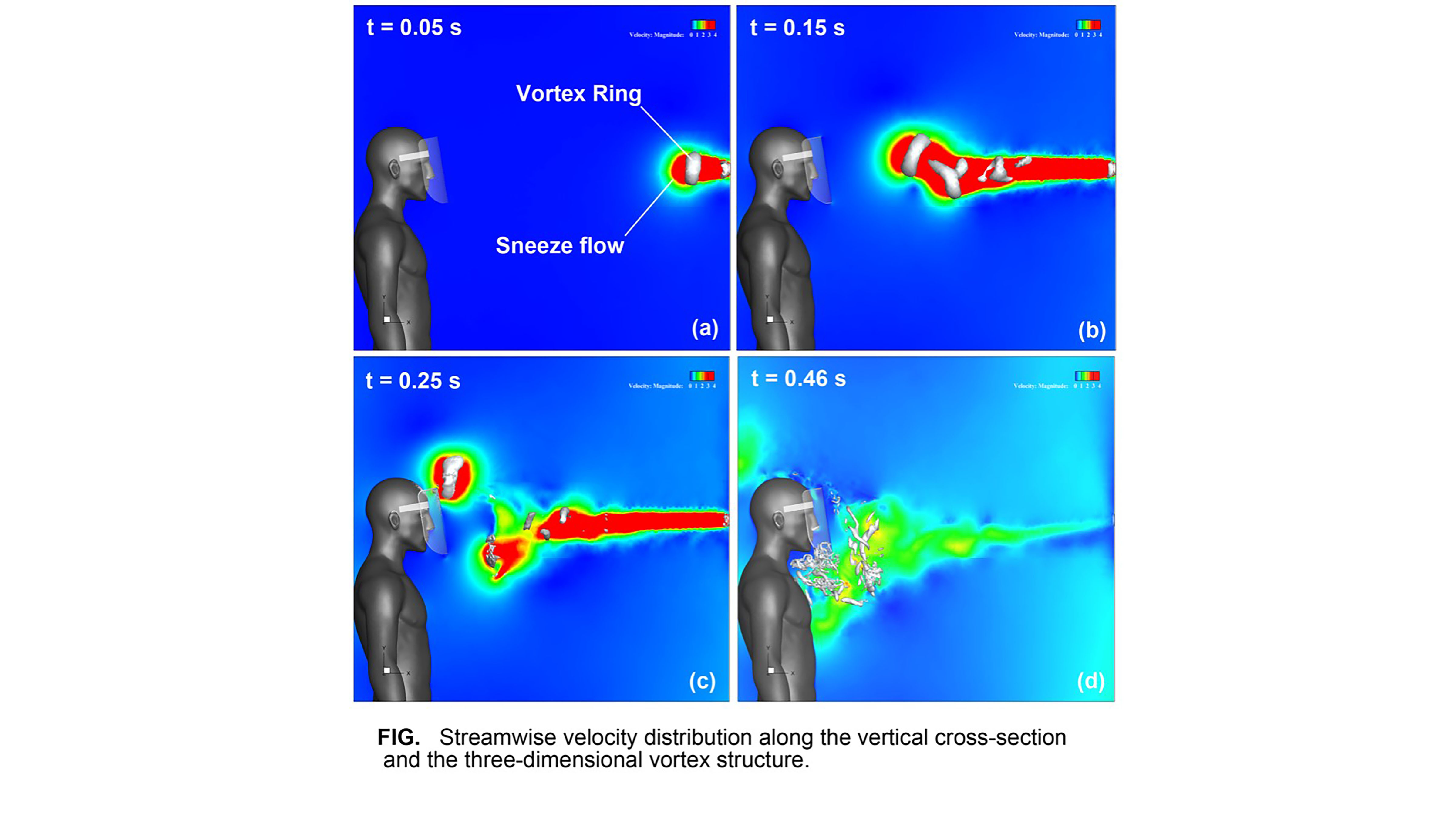
Face Shields No Match for Sneeze Vortex Rings
Do face shields provide enough protection to the wearers against COVID-19 if they don’t also wear a mask? No. But researchers in Japan are working to create face shields safe enough to be worn alone. In Physics of Fluids, Fujio Akagi and colleagues describe their work to gain a better understanding of what happens to the airflow around a face shield when someone nearby sneezes.
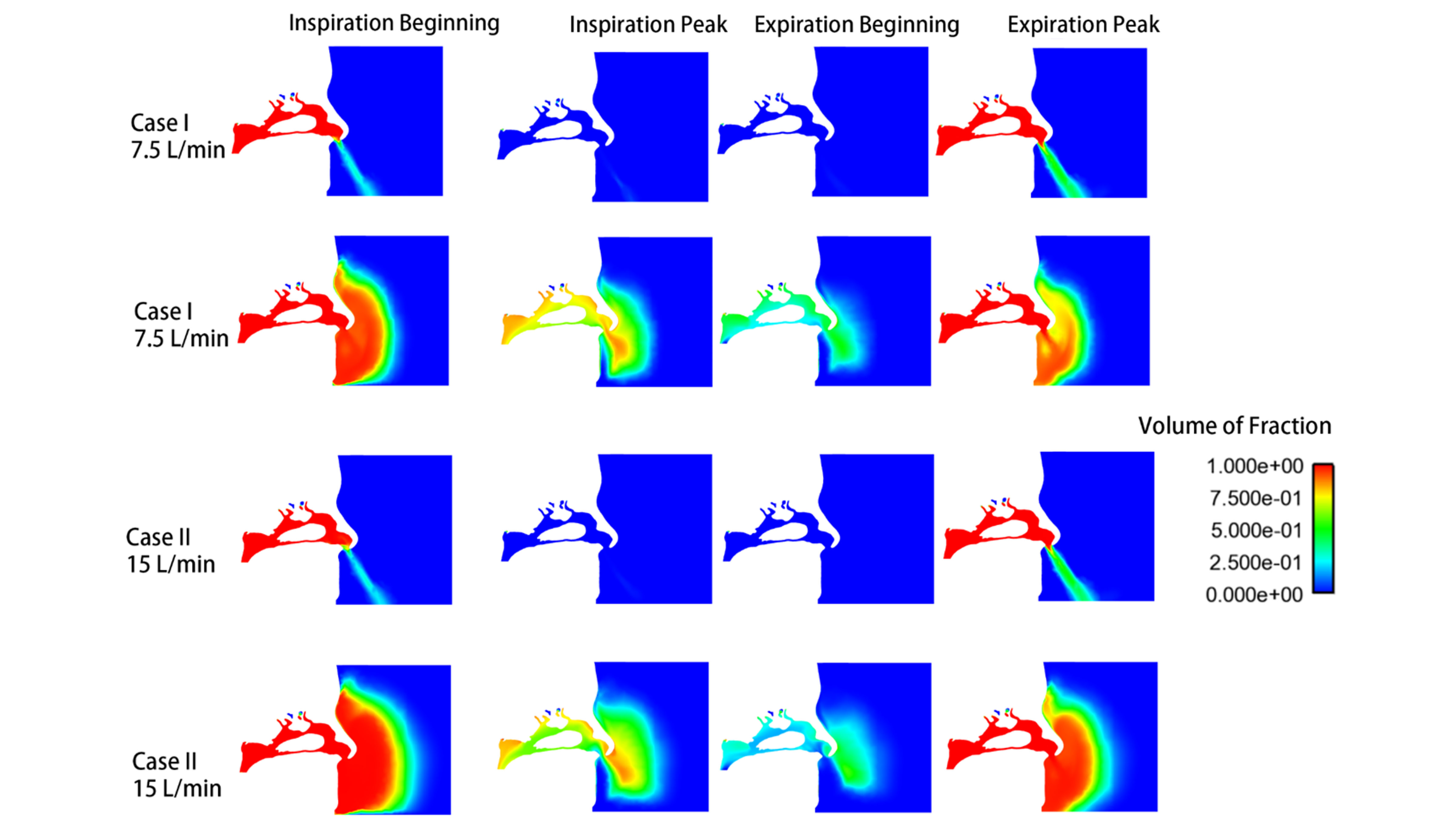
Face Masks Slow Spread of COVID-19; Types of Masks, Length of Use Matter
Using face masks to help slow the spread of COVID-19 has been widely recommended by health professionals. This has triggered studies of the materials, design, and other issues affecting the way face masks work. In Physics of Fluids, investigators looked at research on face masks and their use and summarized what we know about the way they filter or block the virus. They also summarize design issues that still need to be addressed.
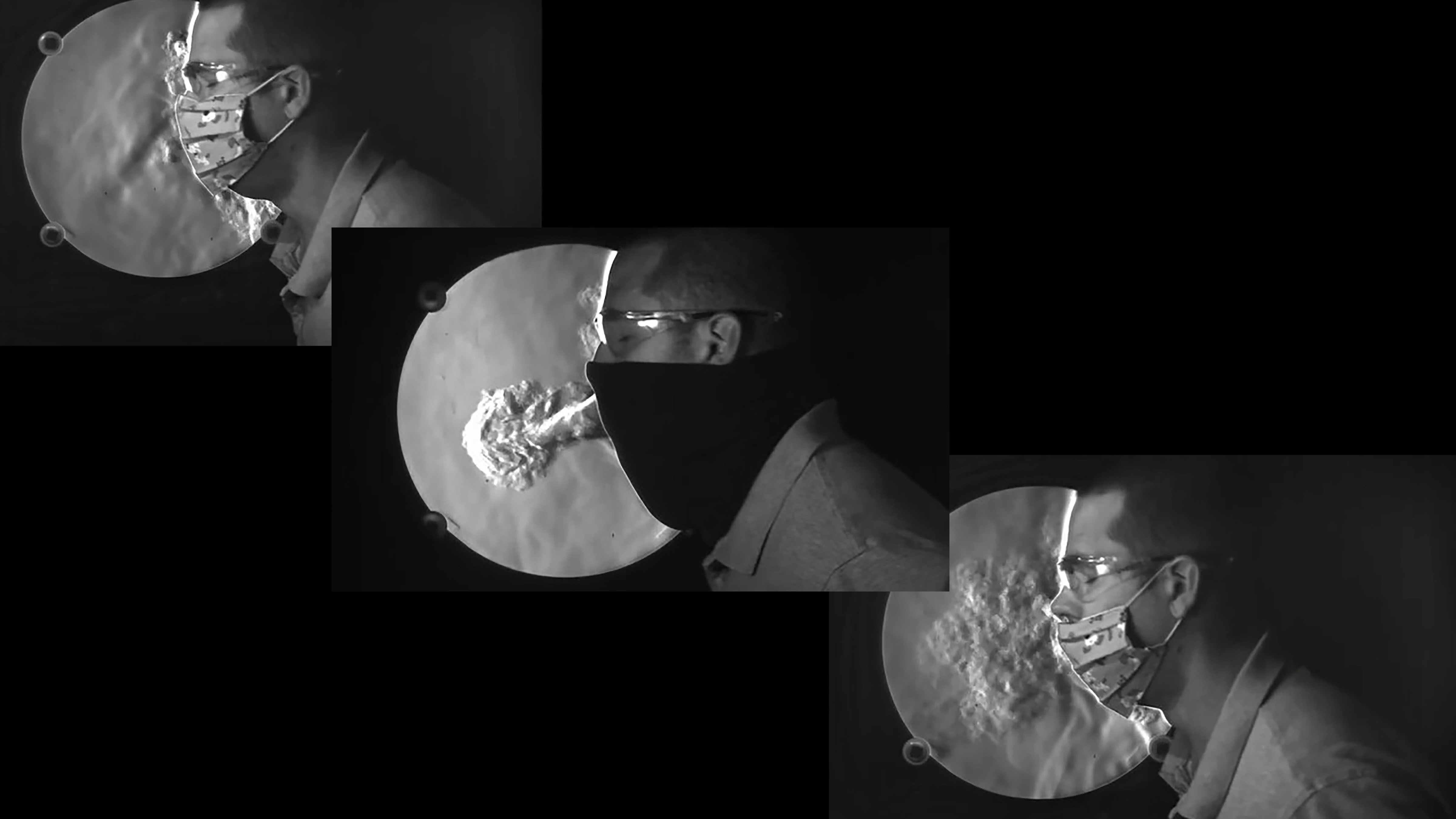
Valves on N95 Masks Do Not Filter Exhaled Droplets
Matthew Staymates, fluid dynamicist at the National Institute of Standards and Technology, is studying different mask types to determine which are the most effective at reducing disease transmission. In Physics of Fluids, he describes exploring the basic flow dynamics of N95 masks with or without exhalation valves. To do this, he generates stunning video from his schlieren imaging, a method to visualize the fluid flow away from the surface of an object, and light scattering.
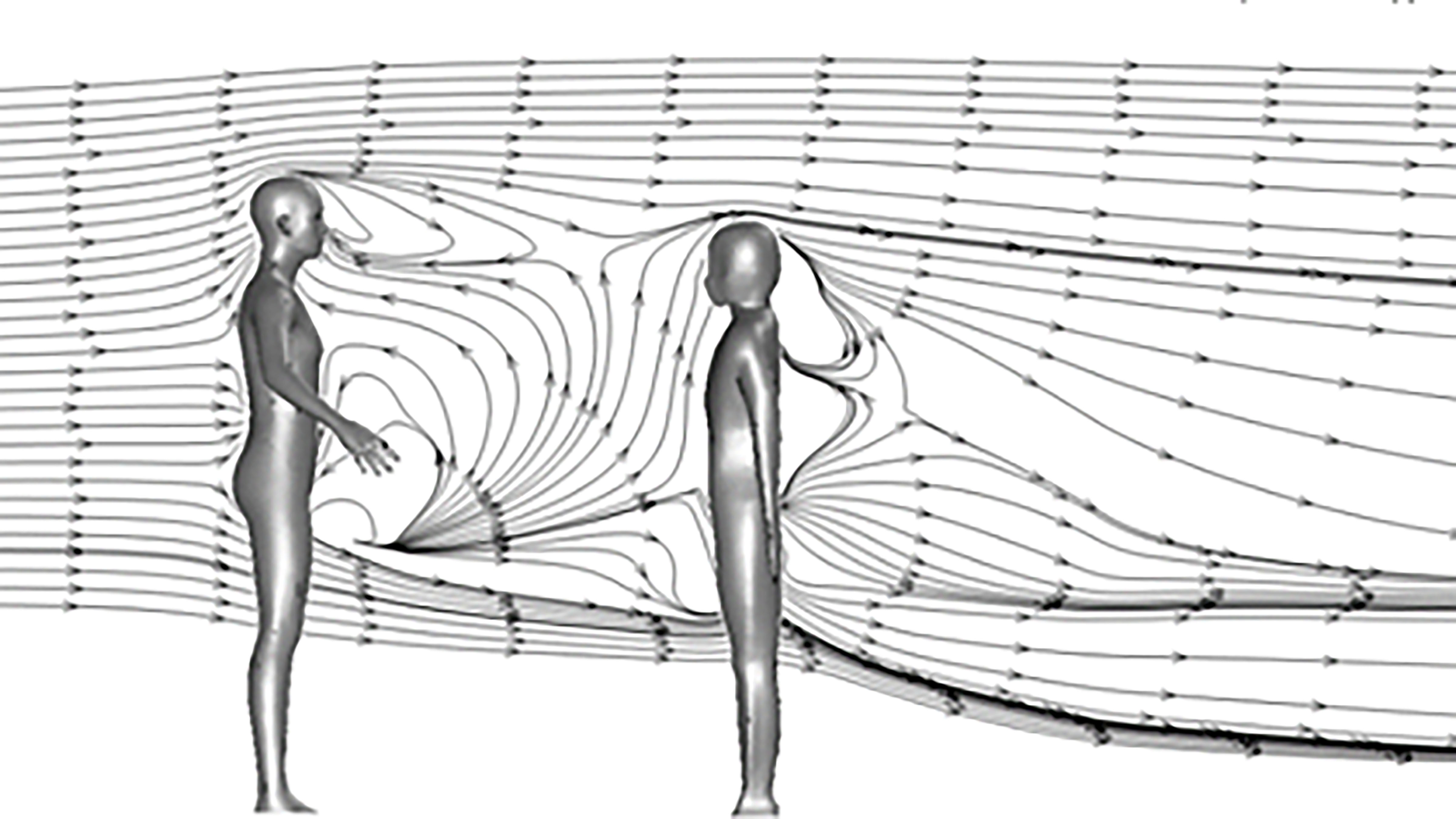
Tracking Flight Trajectory of Evaporating Cough Droplets
The ongoing COVID-19 pandemic has led many to study airborne droplet transmission in different conditions and environments, and in Physics of Fluids, researchers from A*STAR conducted a numerical study on droplet dispersion using high fidelity air flow simulation. The scientists found a single 100-micrometer cough droplet under wind speed of 2 meters per second can travel up to 6.6 meters and even further under dry air conditions due to droplet evaporation.
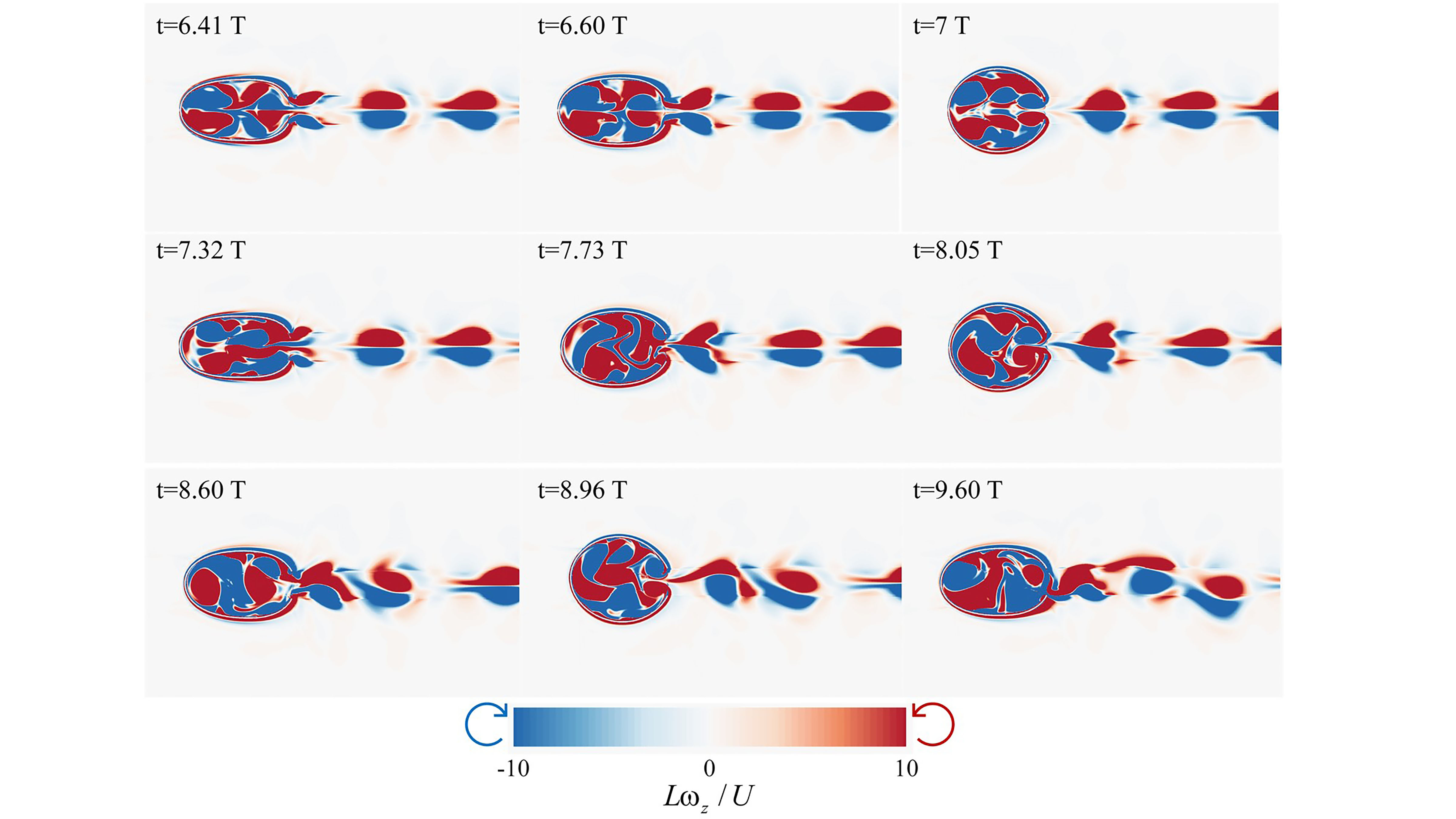
Squid Jet Propulsion Can Enhance Design of Underwater Robots, Vehicles
Squids use a form of jet propulsion that is not well understood, especially when it comes to their hydrodynamics under turbulent flow conditions. Discovering their secrets can help create new designs for bioinspired underwater robots, so researchers are exploring the fundamental mechanism. They describe their numerical study in Physics of Fluids; among their discoveries, they found that thrust production and efficiency are underestimated within laminar, or nonturbulent, flows.
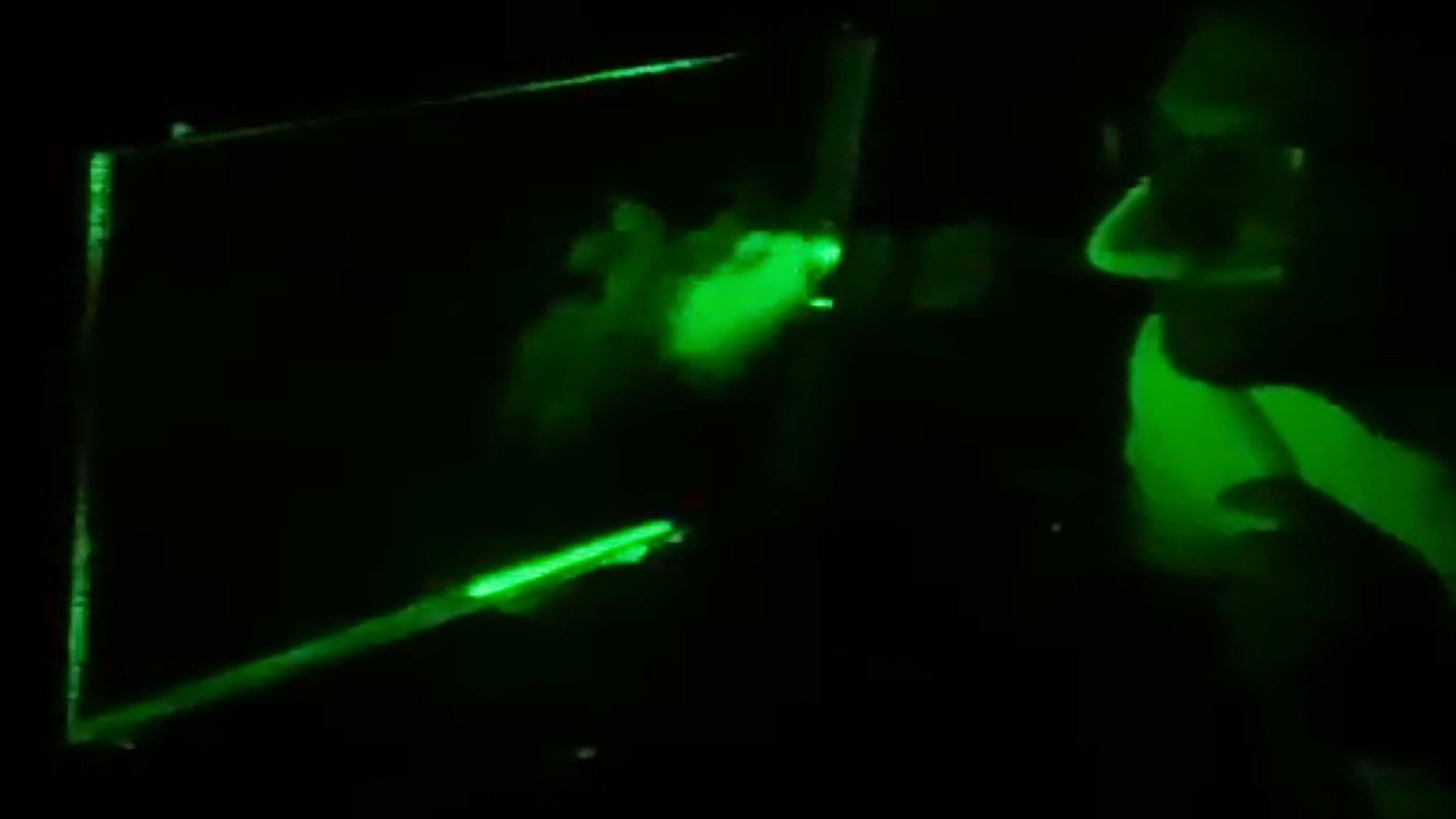
Aerosol Microdroplets Inefficient Carriers Of COVID-19 Virus
Aerosol microdroplets do not appear to be extremely efficient at spreading the virus that leads to COVID-19. While the lingering microdroplets are certainly not risk-free, due to their small size they contain less virus than the larger droplets that are produced when someone coughs, speaks, or sneezes directly on us, said researchers at the University of Amsterdam’s Van der Waals-Zeeman Institute. The results were published in Physics of Fluids.
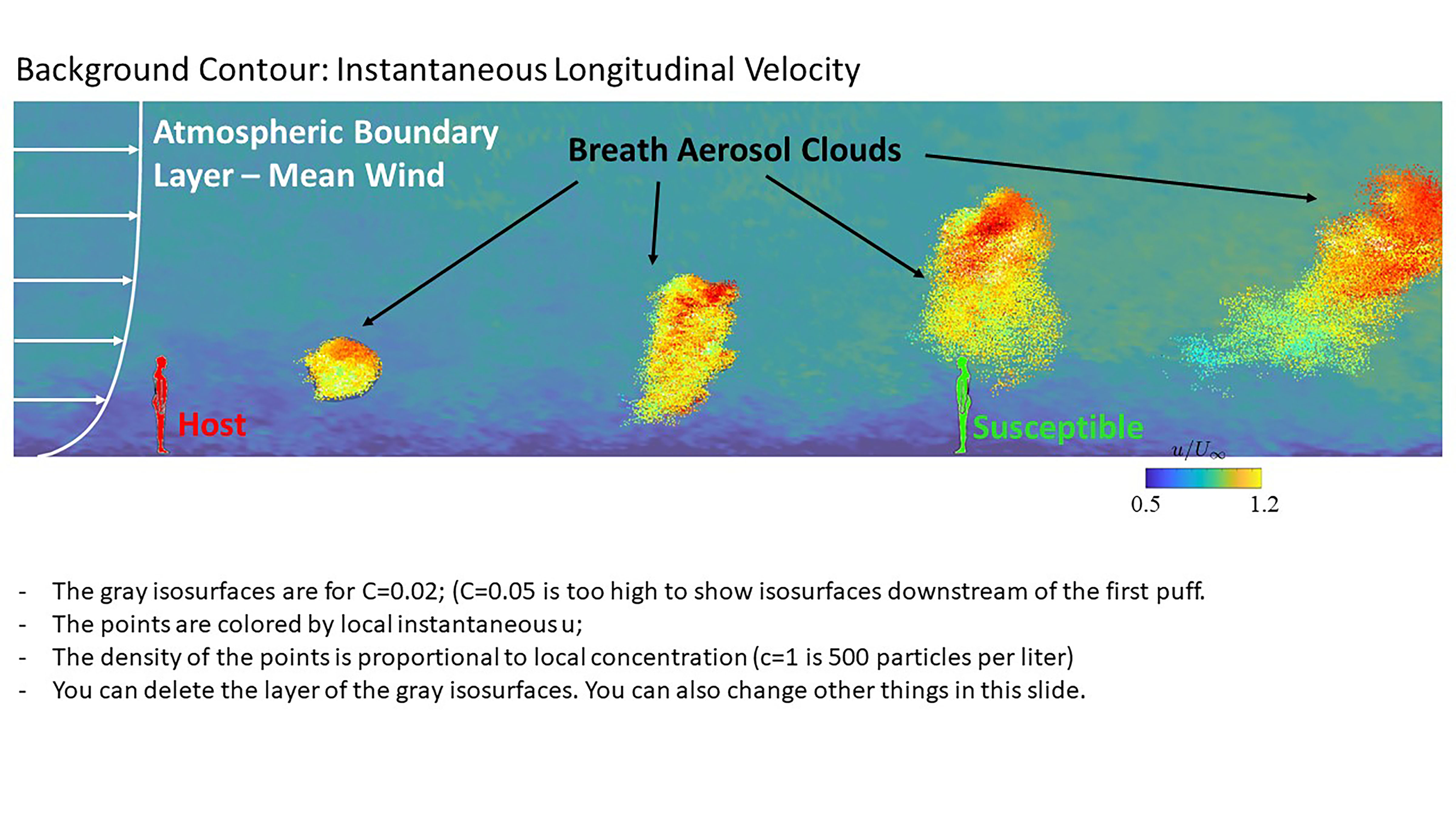
Estimating Risk of Airborne COVID-19 with Mask Usage, Social Distancing
In Physics of Fluids, researchers used a model to understand airborne transmission that is designed to be accessible to a wide range of people, including nonscientists. Employing concepts of fluid dynamics and factors in airborne transmission, they propose the Contagion Airborne Transmission inequality model. While not all factors may be known, it can still be used to assess relative risks. The researchers determined protection from transmission increases with physical distancing in an approximately linear proportion.
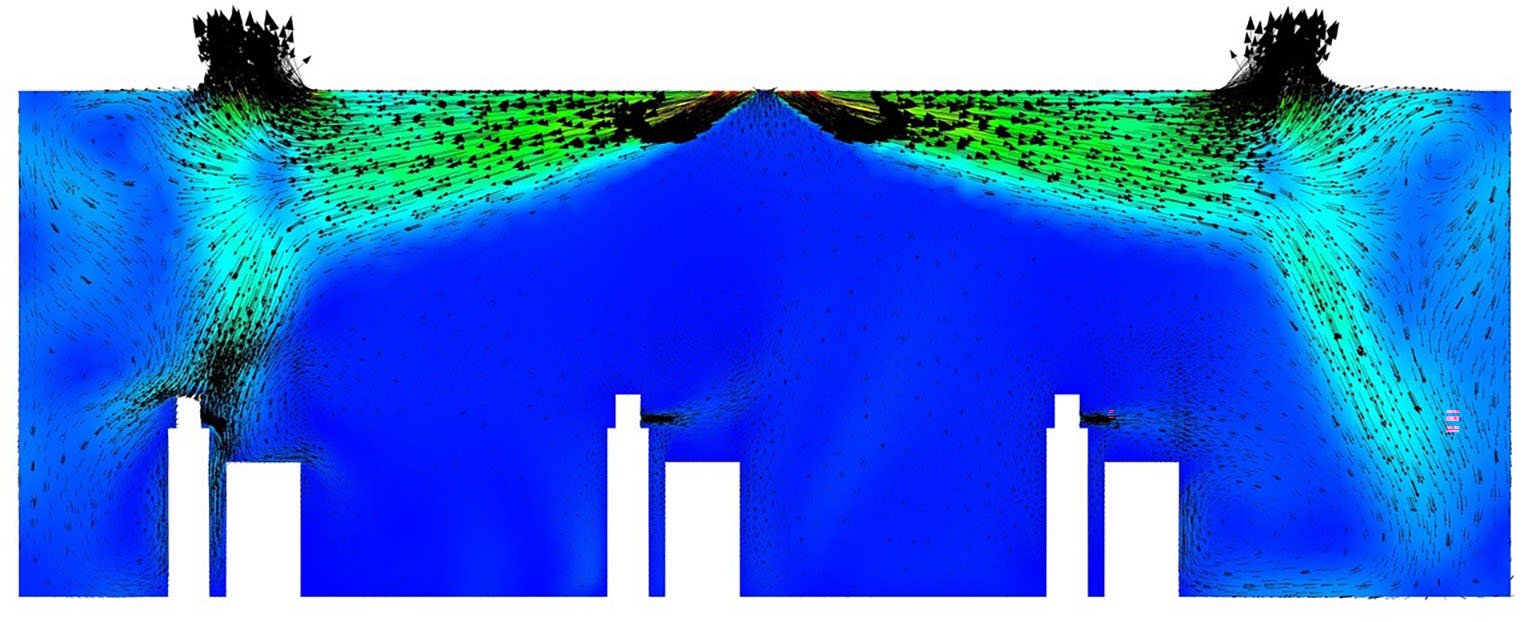
Keeping COVID-19 Out of Classrooms: Open Windows, Use Glass Screens In Front of Desks
Flow velocity distribution and particle size are key in aerosol transport, which is one of the main ways COVID-19 spreads, when aerosol particles are released during exhalation, talking, coughing, or sneezing. In Physics of Fluids, University of New Mexico researchers used computational fluid-particle dynamics to explore aerosol transport within an air-conditioned classroom model. They discovered opening windows increases the fraction of particles that exit the system by nearly 40%, while also reducing aerosol transmission between people within.
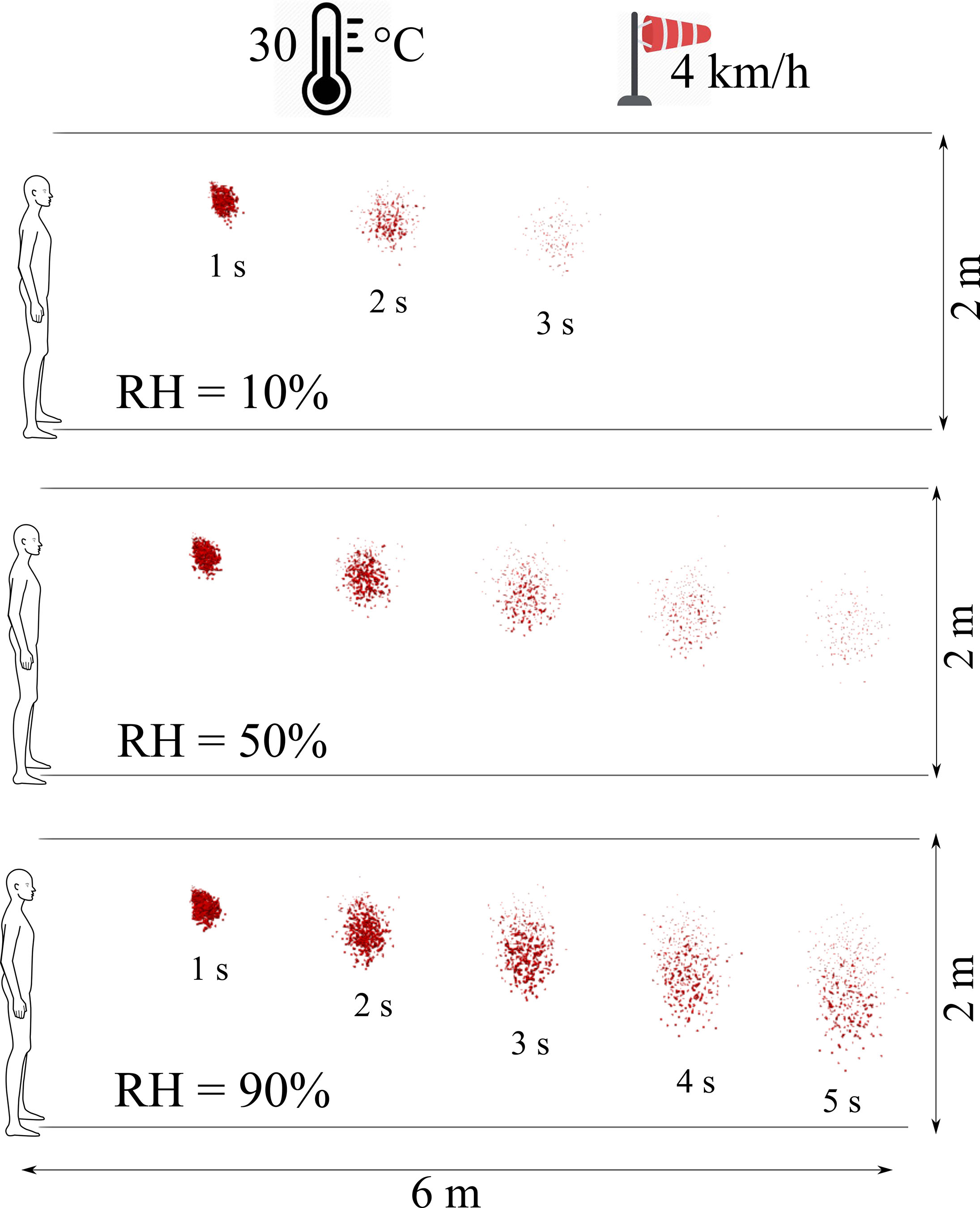
Evaporation Critical to Coronavirus Transmission as Weather Changes
As COVID-19 cases continue to rise, it is increasingly urgent to understand how climate impacts the spread of the coronavirus, particularly as winter virus infections are more common and the northern hemisphere will soon see cooler temperatures. In Physics of Fluids, researchers studied the effects of relative humidity, environmental temperature, and wind speed on the respiratory cloud and virus viability. They found a critical factor for the transmission of the infectious particles is evaporation.
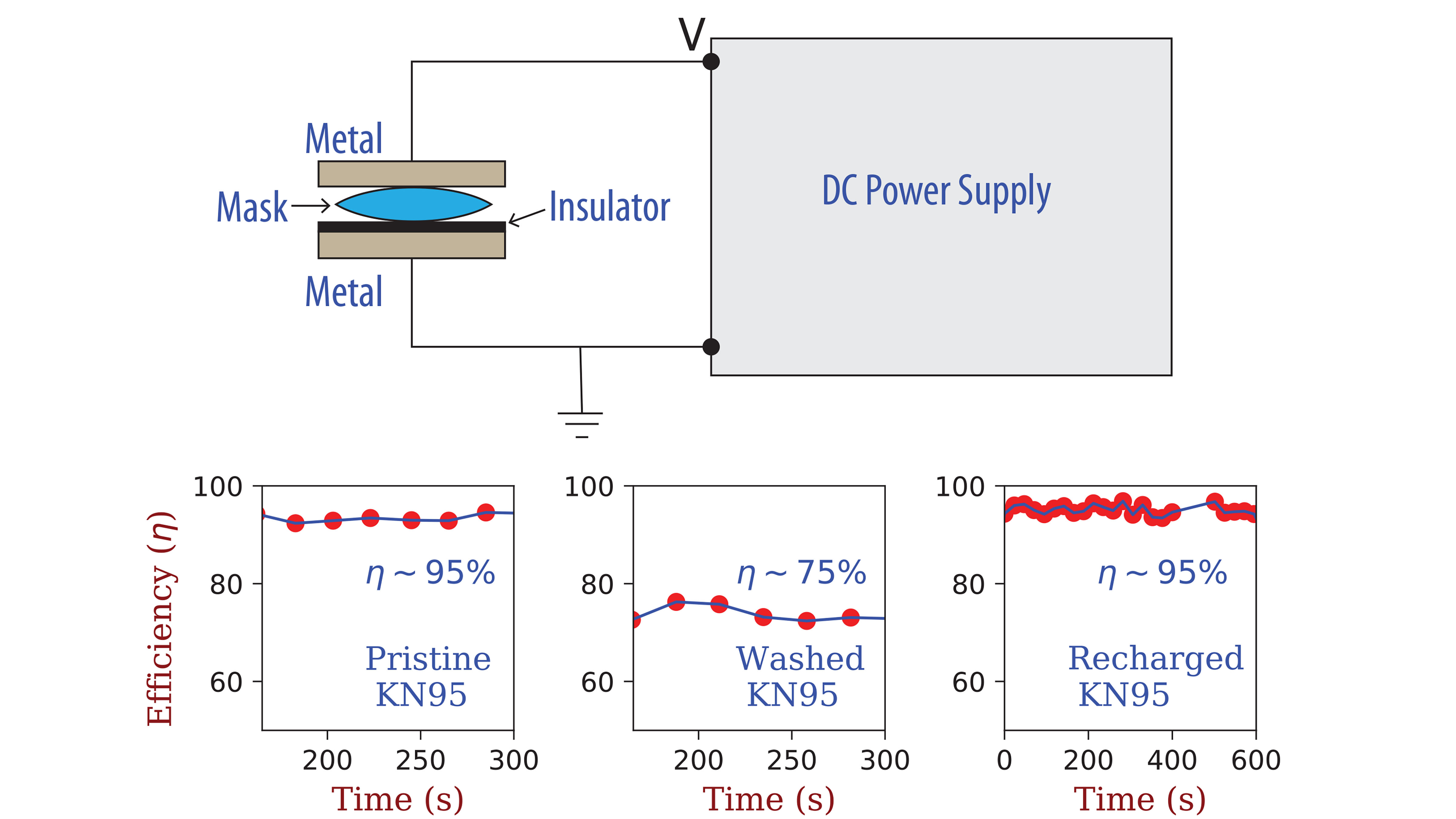
Recharging N95 Masks for Continued Usage
N95 masks achieve 95% efficiency at filtering out tiny 0.3-micron particles, while maintaining reasonable breathability, thanks to a layer of polypropylene fibers incorporating electrical charges to attract particles. Extended usage and decontamination, provoked by severe shortages during the pandemic, can easily remove the charges and degrade filtration efficiency. In Physics of Fluids, researchers share a method to restore the filtration efficiency of N95 masks to out-of-box levels, as long as the mask is not structurally compromised.
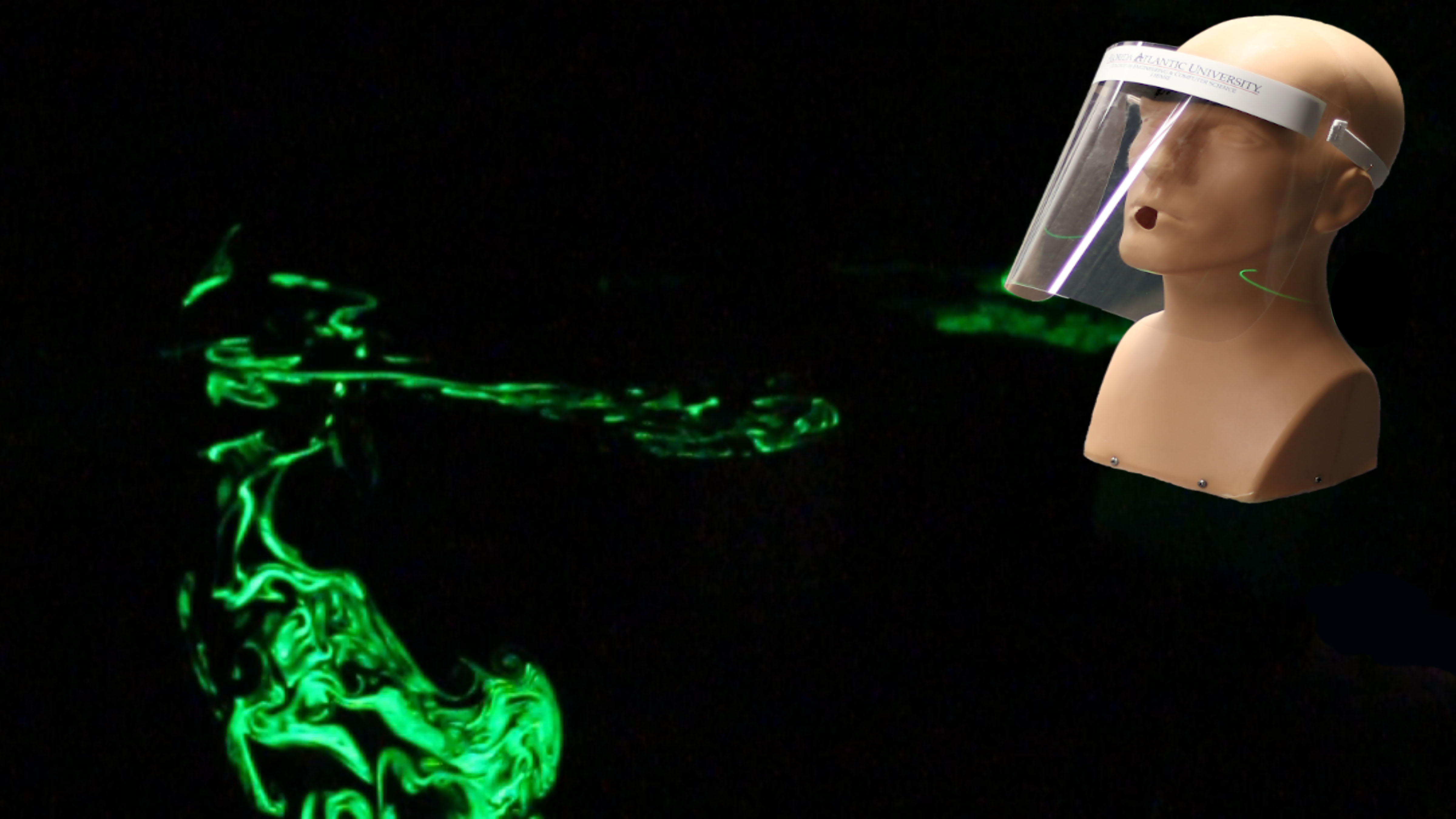
Face Shields, Masks with Valves Ineffective Against COVID-19 Spread
As countries experience a steep surge in COVID-19 infections, face masks have become increasingly accepted as an effective means for combating the spread of the disease when combined with social distancing and frequent hand-washing. Increasingly people are using clear plastic face shields and masks with exhalation valves instead of regular cloth or surgical masks, since they can be more comfortable. In a paper published in Physics of Fluids, researchers investigate whether they are as effective.